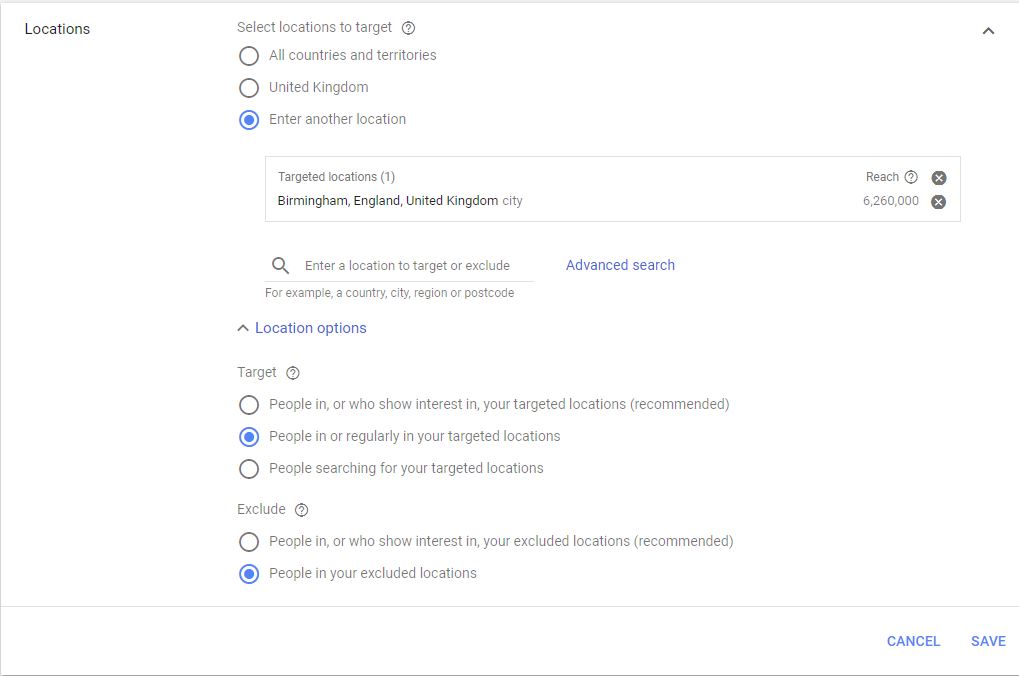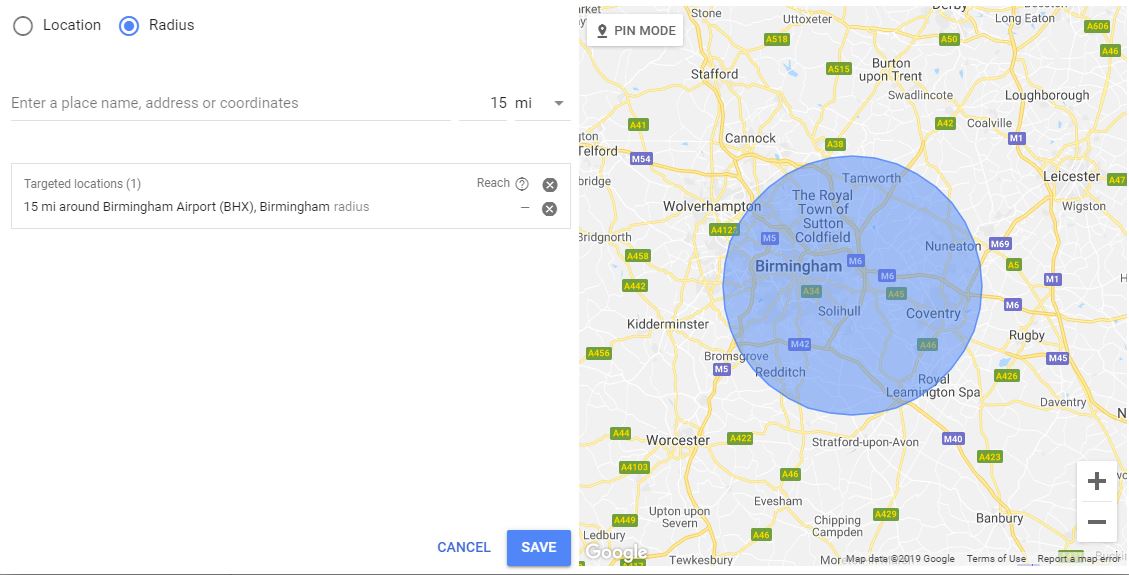What is location targeting in Google Ads?
Google Ads location targeting is a great feature that allows you to target your ads to users in specific areas. This allows you to focus the budget of a campaign in a specific area. The locations that you choose to target can be countries, cities, regions, postcodes or radiuses around a location. Which area type you choose depends on the type of business that you are in. It will also show you an estimated reach figure for the selected locations so that you can see if your audience is of the optimal size for your campaign.
Location targeting options
There are a few different options when it comes to setting your target locations. These include:
- People in, or who show interest in, your targeted locations (recommended)
- People in, or who are regularly in, your targeted locations
- People searching for your targeted locations
Which option you choose depends on your business and your target market for the campaign. For example, for a hotel based in Birmingham they could set the location targeting for Birmingham as ‘People in, or who show interest in, your targeted location.’ This would then show the ads to people who are interested in the target location of Birmingham, and the users could be anywhere in the world.
If a business in Birmingham only wanted customers in the local Birmingham area, they could set the ads to show to ‘People in, or who are regularly in, your targeted locations’ with the location as Birmingham. The ads will then only show to people in Birmingham. This option is often missed as people aren’t aware of it. It is an important feature which will ensure budget is not wasted on users that live outside of the target area and would not convert, as the ads will only show to people in or regularly in the targeted locations.
The radius location targeting feature is a great way to quickly target a specific area. For example, a business can set the ads to show to people in or regularly in a radius area of 15 miles around their business. This is a lot more efficient than typing in each area individually. This would work well for a delivery business that only delivers within a certain radius for example, so that the ads would only show to their target audience. This can help prevent budget waste by only targeting the specified audience.
Location exclusion options
There are two options when it comes to excluded locations. These are:
- People in, or who show interest in, your excluded locations (recommended)
- People in your excluded locations
The excluded locations can be set by country, city, region or postcode. If a business would like to not display ads to people in a specific area, this feature is a great tool to prevent budget waste.
Why is location targeting important in Google Ads?
The main benefit of using location targeting on your Google Ads campaign is that it means you can focus budget on the users that you want. It stops the budget being spent on users that are not in your target audience, or are less likely to convert. You can target the areas that really matter to your business, and exclude areas that are not relevant.
Another benefit is that you can target different campaigns to different areas – allowing you to have location specific ads. Location specific ads will appeal more to users as if the area is in the ad, it will grab their attention and be more relevant to them.
When should you use location targeting?
Location targeting can be used for businesses that have a storefront. This will allow them to show ads to people who are in a radius of the store location. It will therefore focus the budget on people who are most likely to visit the store, maximising the ROI.
But it is not only businesses with storefronts that can capitalise on location targeting. For example, a business that sells surfing equipment online could target ads to people that show interest in areas that are popular surf locations.
Location targeting can also be used effectively for businesses that operate in more than one location. It can be used to divide up campaigns into location specific campaigns. This will allow the ads to have a personal touch for users in specific areas. It will also help to improve the click through rate as the listing will be seen as a local business.
Location Bid Adjustments
Another great feature that runs alongside the location targeting is location bid adjustments. This allows you to focus the budget on the locations that are performing best. For example, if one area is getting a lot of conversions, it would make sense to increase the bid in that area and decrease the bids on locations that are not performing as well.
Google Ads User Location Report
Within Google Ads, you can make use of the user location report to see where your clicks are coming from in terms of location.

This is a handy tool for two primary reasons.
It can be used in order to see how specific areas are performing and it can help you to make a judgement on which locations would benefit from a bid adjustment. In the user location report you can see how specific areas have performed in terms of clicks, impressions, CTR, average CPC, conversions and more. These statistics can all help towards forming a decision.
The user location report can also help you to decide which areas would benefit from having specific location campaigns. For example, if an area is getting a lot of impressions but not clicks and therefore has a low CTR – it could benefit from having location specific ads just targeting that area.
Conclusion
Overall Google Ads location targeting is an effective way to show your ads, or not show your ads to users in specific locations. It has benefits for a range of business types and industries and if optimised correctly, location targeting can increase CTR, conversion and ROI. To find out more, contact us today to speak to a Google Ads specialist.









